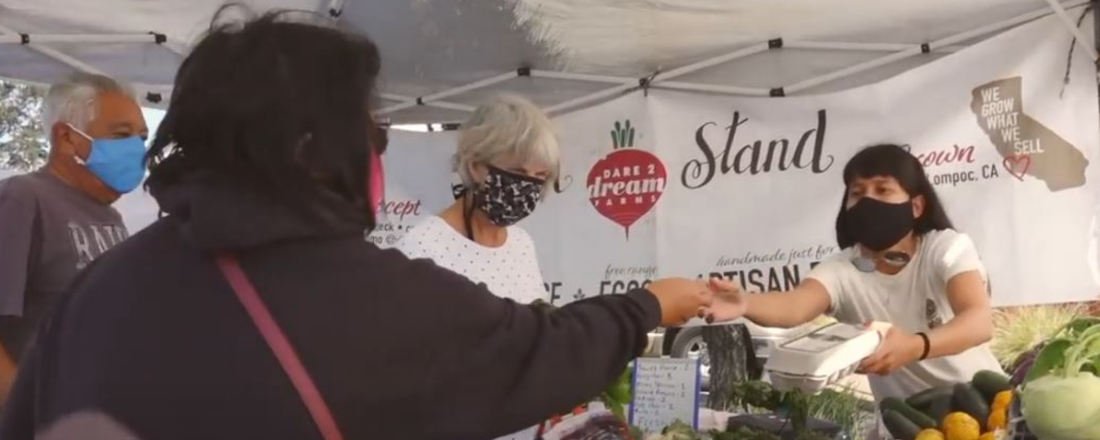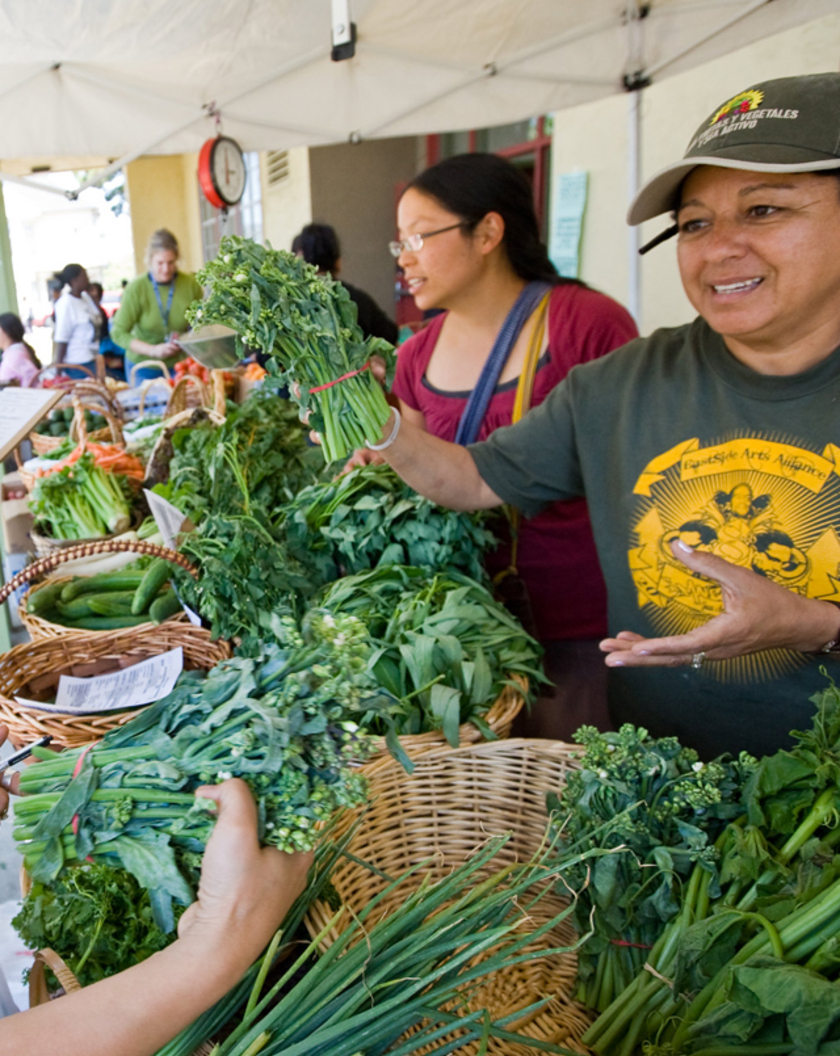
Press Release
Farmers Market Food Navigators Help Low-Income Shoppers Eat More Healthily
-
Focus Areas
Chronic Disease Prevention, Healthy Communities -
Issues
Nutrition & Food Security -
Expertise
Health Education & Promotion -
Programs
Center for Wellness and Nutrition

The Public Health Institute’s Center for Wellness and Nutrition (CWN) is expanding a successful approach it piloted with three California farmers markets in 2019 to increase the nutrition security of low-income shoppers. Now this summer, 35 farmers markets in eight California counties will employ “Food Navigators” to help shoppers with limited resources stretch their food assistance benefits farther, increase their participation as farmers market shoppers, and increase their purchases of locally grown fruits and vegetables.
The 2019 California Department of Social Services CalFresh Healthy Living food navigator project led by CWN in three markets showed promising results, including a 402% increase in the redemption of CalFresh food assistance benefits, compared to a 31% increase in markets without food navigators, and a 202% increase in the number of new Market Match customers, compared to a 13% increase in Market Match in markets without food navigators. The interventions show that farmers market nutrition programs can improve inclusion, support non-traditional market shoppers’ experiences, influence health-related behaviors and increase market sales for local farmers.
“Encouraging low-income residents to shop at farmers markets is a win-win: communities have more access to healthy, fresh food, and the markets bring in new customers and increase their sales,” said Amy DeLisio, director of the Center for Wellness and Nutrition. “Our research shows that food navigators can attract more shoppers with or without offering incentives and keep more food benefit dollars in the local economy. Farmers market incentives increase low-income shoppers’ buying power for healthy food, which increases not only food security, but their nutrition security in communities where healthy, affordable food choices are often scarce.”
In 2019, the food navigator model was tested at three farmers markets participating in the California “State Nutrition Action Council: Farmers Market Initiative” (SNAC) program. For six consecutive weeks, food navigators showed shoppers how to use food assistance benefits, provided interactive nutrition and health education activities on-site at the market in English and Spanish, and distributed promotional materials at farmers markets about WIC, the Senior Farmers Market Nutrition Program, CalFresh (SNAP in California), and Market Match (the federally and state matched funded program at the California Department of Food and Agriculture where shoppers’ can double their CalFresh dollars on fresh produce purchases).
Outside of California, farmers market food navigators have had similar success. The Michigan Fitness Foundation’s Farmers Market Food Navigator project was evaluated by CWN and results were published in December in the Sage Journals. Over three seasons from 2016-18, the research showed that in markets with food navigators:
- 80% of shoppers said they would shop more often at the farmers market;
- 52% of shoppers said they would eat more vegetables and 50% said they would purchase more vegetables;
- 57% of farmers market vendors and 50% of market managers in season three agreed that food navigators helped increase overall fruit and vegetable sales.
The CWN Food Navigators program this summer will take place at 35 farmers markets in San Luis Obispo, Fresno, Monterey, Riverside, San Bernardino, San Joaquin, Madera and Tulare counties. The program is included in the national SNAP-Ed Toolkit as a research-tested intervention.
Work With Us
You change the world. We do the rest. Explore fiscal sponsorship at PHI.
Support Us
Together, we can accelerate our response to public health’s most critical issues.
Find Employment
Begin your career at the Public Health Institute.



